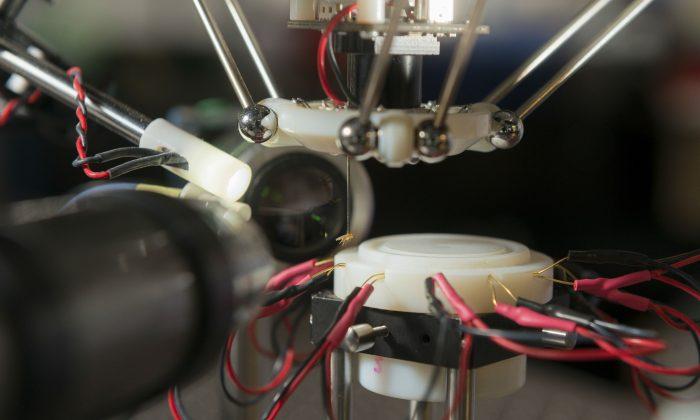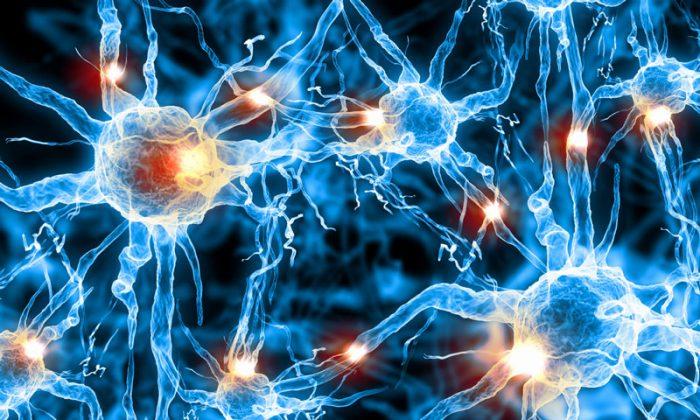From the time we’re born, the developing brain undergoes a process to cut off excess nerve connections. Some estimates show that as many as half of the brain’s connections formed during development are clipped back as the final wiring takes shape.
Researchers at Stanford University recently found a protein that is essential for the brain to remove those excess connections. The team specifically showed a role for the protein in the developing visual system in mice, but the work appears to apply broadly across the developing brain. They published their findings in the journal Nature.
Study leader Carla Shatz, professor of biology and of neurobiology, says the discovery helps clear up something that has been a mystery to those who study brain development: how does the decision get made to eliminate some connections?
It also settles a decade-long debate over whether the nervous system or the immune system is making those decisions. (Spoiler alert: It’s the nervous system.)
A Single Vision
“Vision is a challenging problem because you have two eyes and only one view of the world,” says Shatz. “There’s a very beautiful set of wiring steps that makes sure the eyes are pointed at the same place and the two images get aligned.”
Shatz says the rule of which connections the brain cuts back to create that single vision follows a simple mantra: “Fire together, wire together. Out of sync, lose your link.”
Or rather, if early in life the left sides of both eyes see the same duck motif wallpaper, those neurons fire together and stay linked up. When the top of one eye and bottom of the other eye form a connection, the nerves fire out of sync, and the connection weakens and is eventually pruned back.
Over time, the only connections that remain are between parts of the two eyes that are seeing the same thing.
The ability to detect which nerves fire out of sync and should therefore lose their link requires the protein Shatz’s team reported, which goes by the name of MHC Class I D, or D for short. This protein is one that is famous for its role in the immune system, but only in the past decade has Shatz’s team started building a case for D’s independent role in the brain.
Two Camps, One Protein
In 2000 Shatz first published work suggesting that a group of immune proteins called MHC in mice and HLA in people played a role in the developing nervous system. At the time, this caused a stir among immunologists, who were surprised to find their proteins showing up in the brain.
After the initial discovery, Shatz went on to show that two of those MHC proteins—D and its sister protein K—seemed to be important in eliminating connections in the brain.
Mice genetically engineered to lack both K and D had poorly functioning immune systems and also ended up with the visual system in a jumble, with unrelated parts of the two eyes forming connections. Without D and K the mice weren’t detecting which connections fired out of sync, so those connections didn’t lose their link.
After Shatz published that work, some immunologists argued that perhaps D and K were necessary for brain remodeling only because of their key function in the immune system. “They were saying that the immune system was telling the nervous system what to prune,” Shatz says.
It was a theory, but not one Shatz agreed with. Her feeling was that just because D and K were first found in the immune system didn’t mean they couldn’t have a unique role in the brain. “The nervous system has just as much right to these immune proteins as the immune system,” Shatz adds. Her most recent work makes that point clear.
‘D’ on the Brain
Shatz and her group worked with the mice that were lacking D and K everywhere, then used genetic engineering tricks to add D back, but only in the neurons. These mice still had poorly functioning immune systems, but had perfectly normal eye connections. In these mice, the nerves were able to determine which connections to cut and which to keep, even without the immune system.
The group went on to show that the presence of D alters the composition of other proteins on the nerve cell surface that are in charge of receiving signals from other nerves. Her team thinks that it is this difference in how the nerve receives signals with or without D that makes the pruning process go awry.
Essentially, without D all nerve connections appear to be firing together and therefore they stay wired together.
Shatz says that in addition to explaining an important part of brain development, the work could also provide a new avenue for studying schizophrenia. Some studies have shown that people with mutations in the human genes related to D (called HLA genes) are more prone to the disease. Other studies have associated schizophrenia with improperly formed connections in the brain. Shatz suggests that this new role for D in the brain could mean that the pruning process has gone awry in schizophrenia. The group plans to explore this idea further, as well as to tease apart what D is doing to alter the composition of neurotransmitter receptors on the nerve cell surface.
The researchers received support from the National Institutes of Health, the G. Harold and Leila Y. Mathers Charitable Foundation, and the National Science Foundation.
Source: Stanford. Republished from Futurity.org under Creative Commons License 3.0.


Friends Read Free